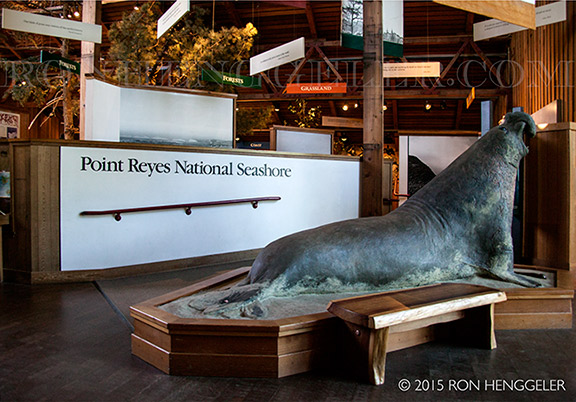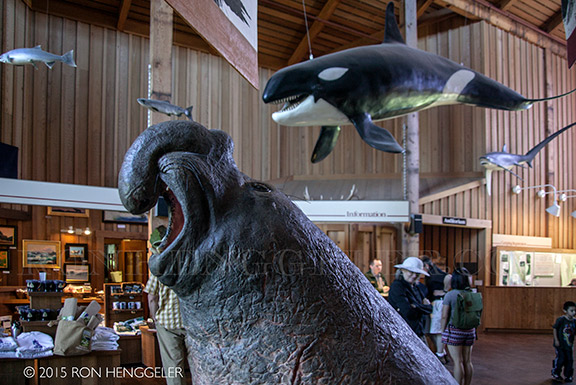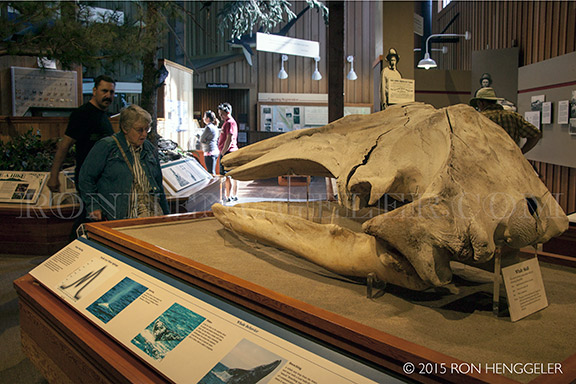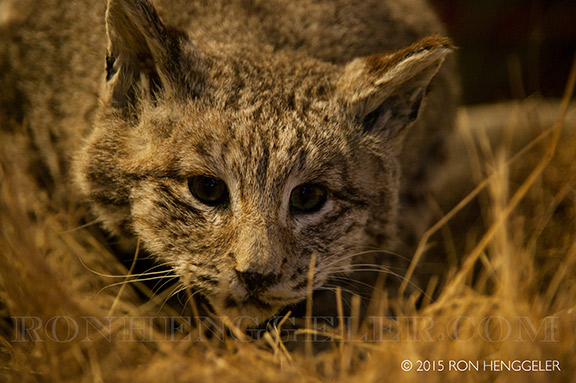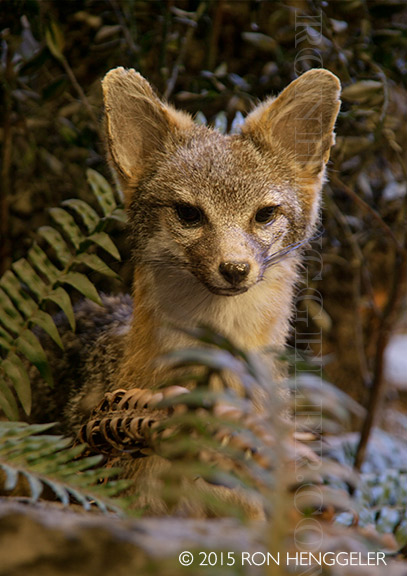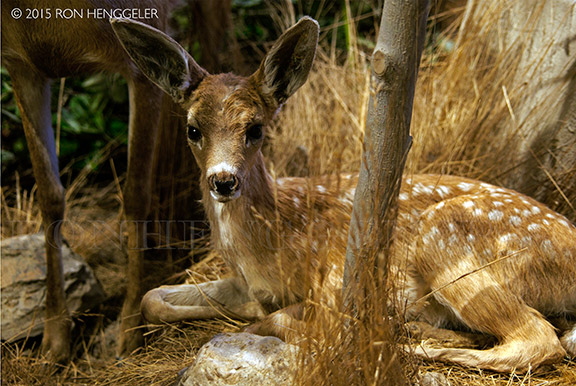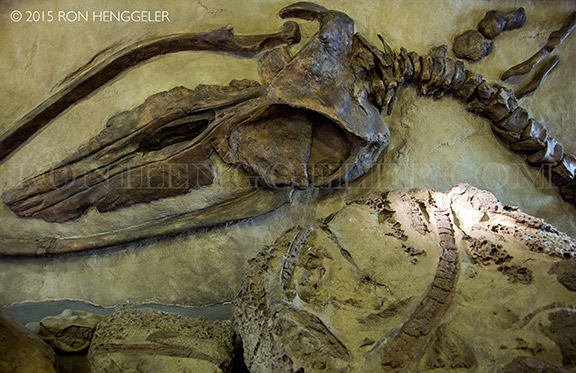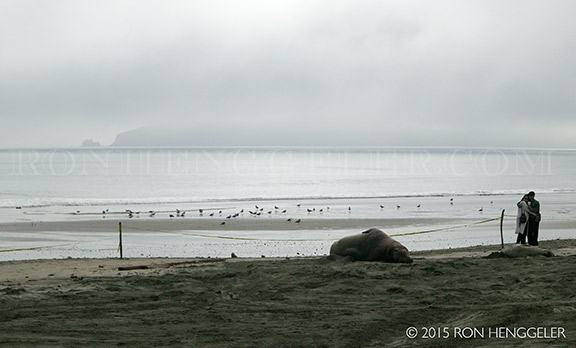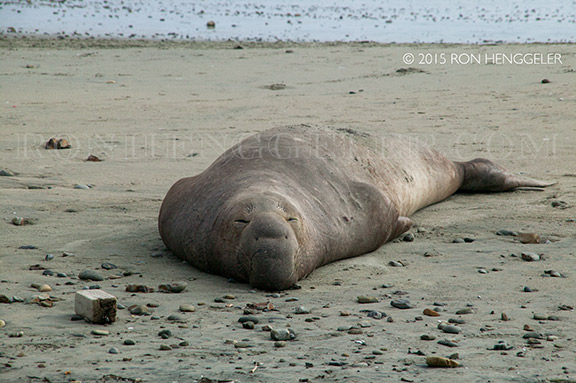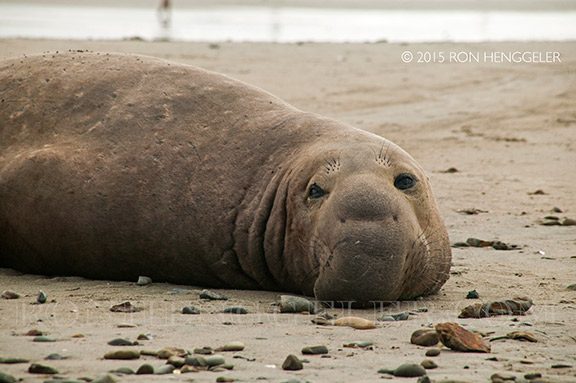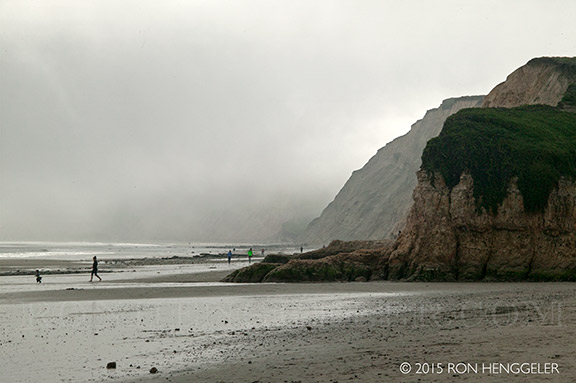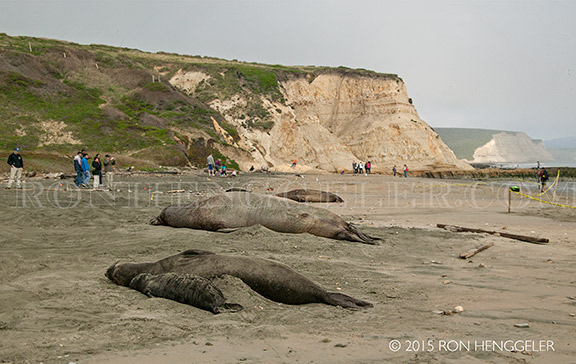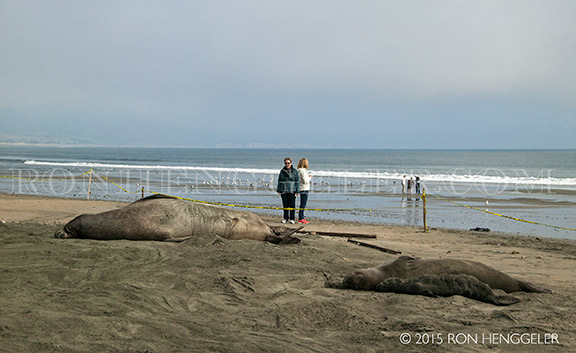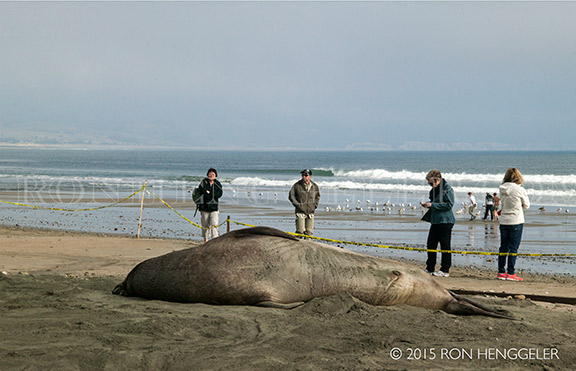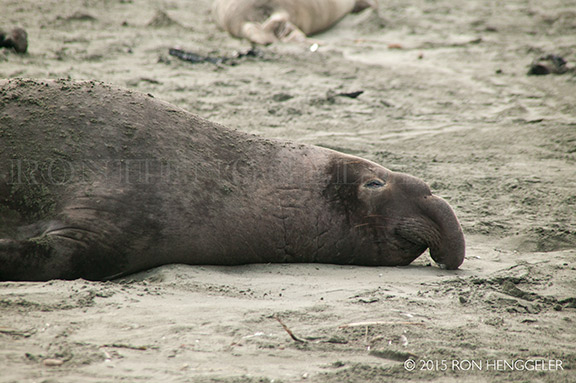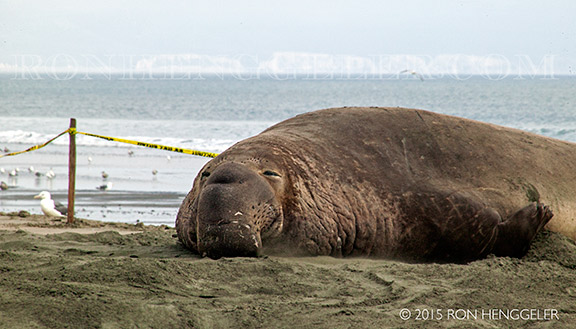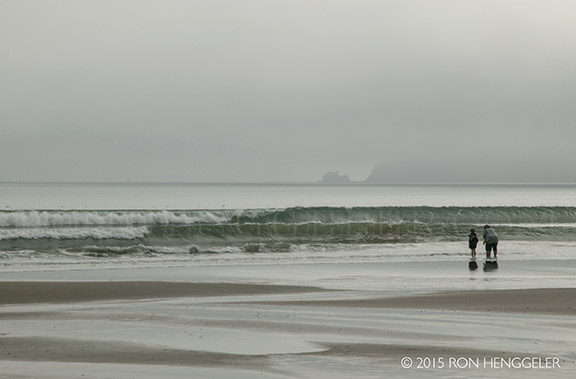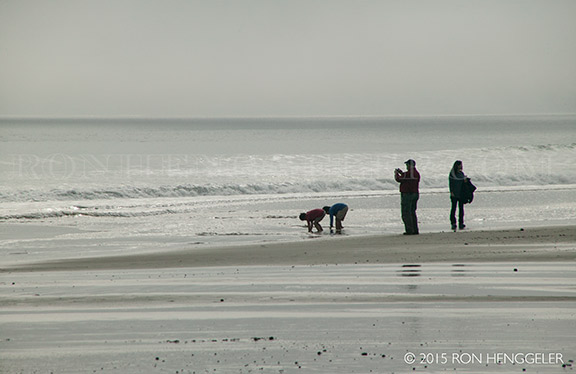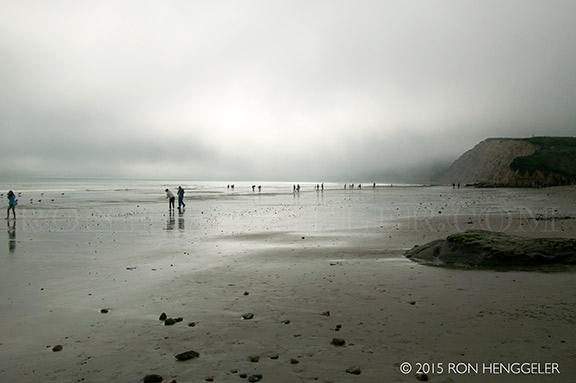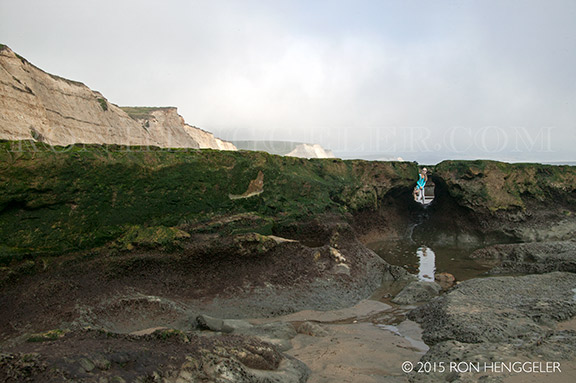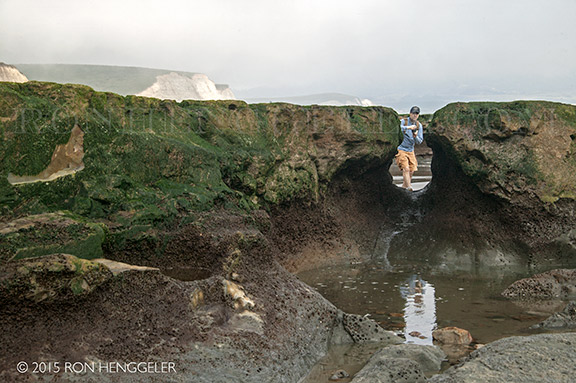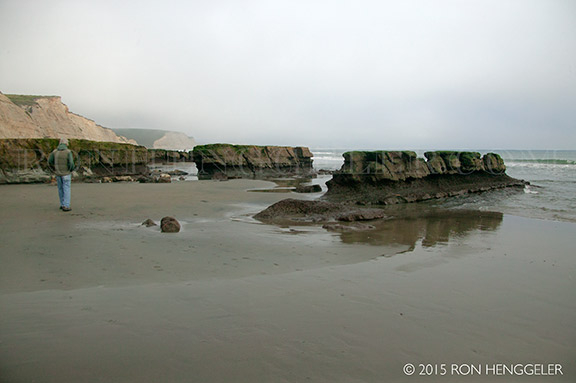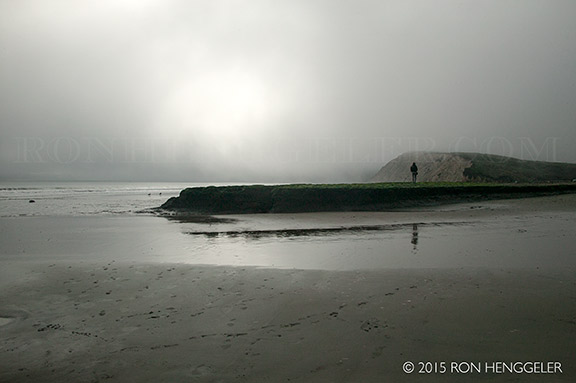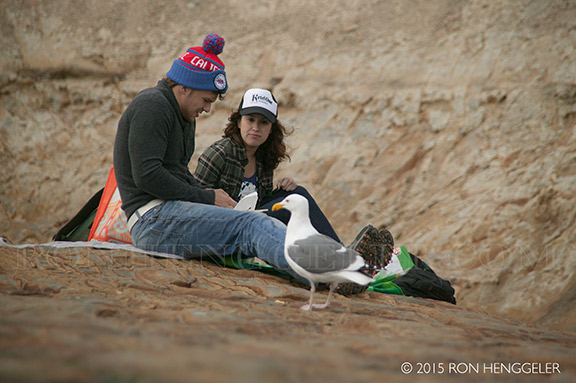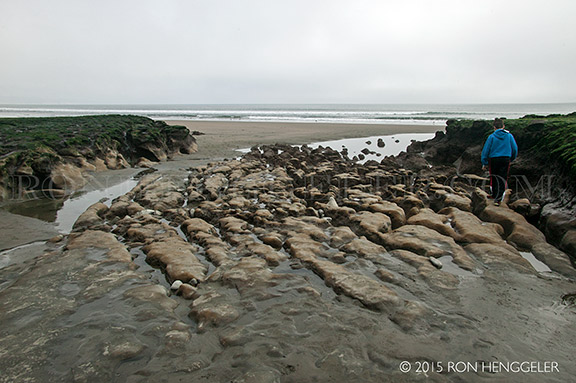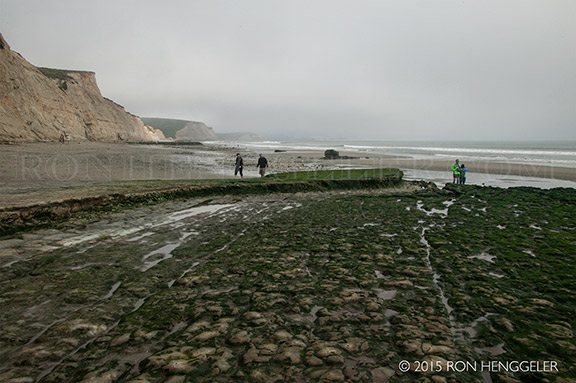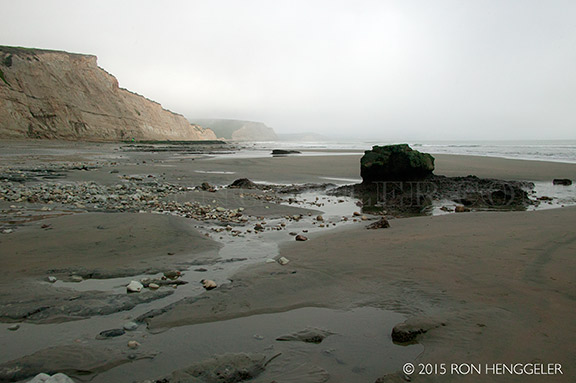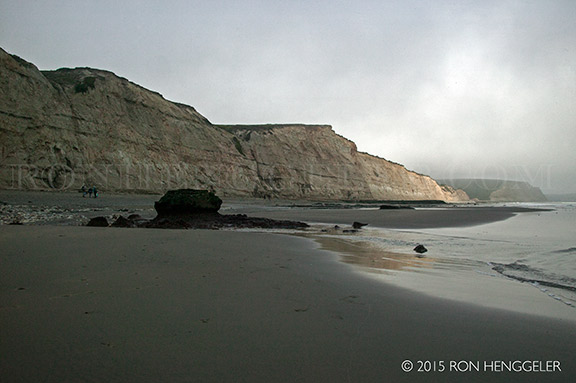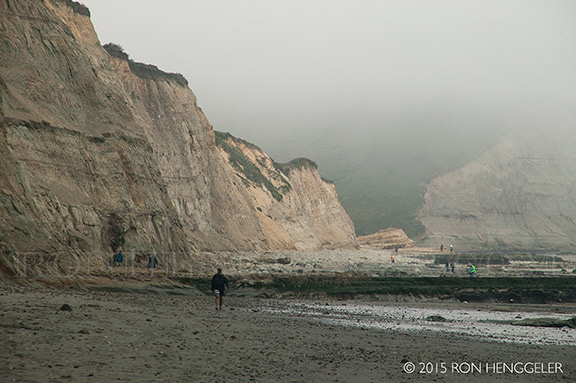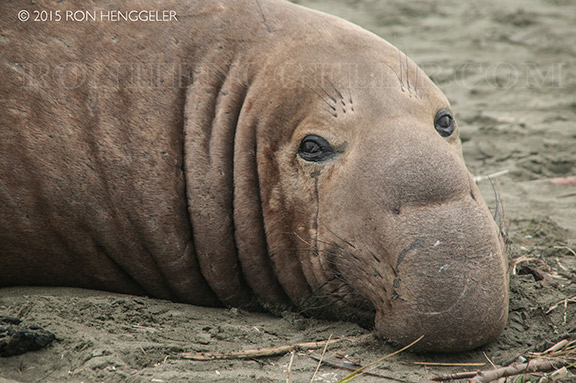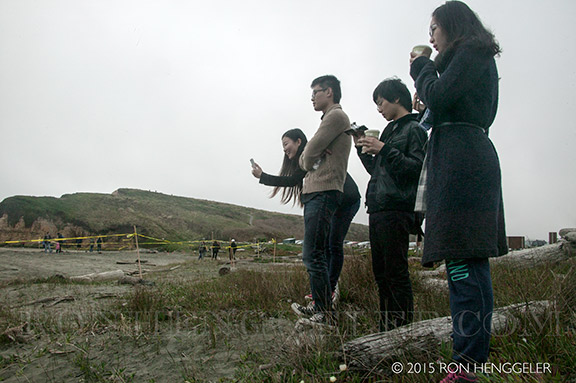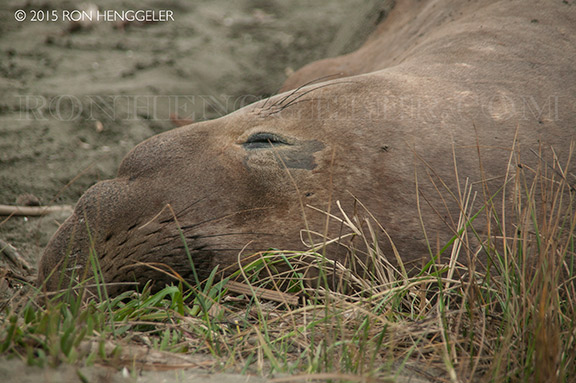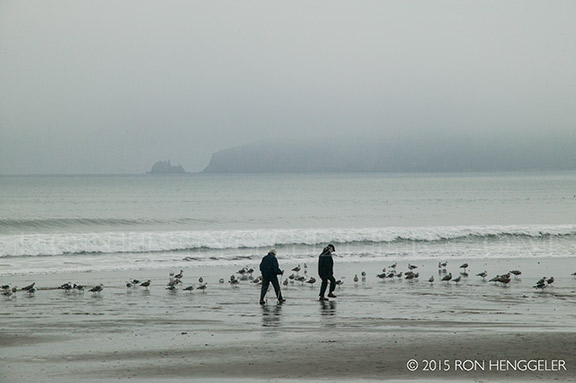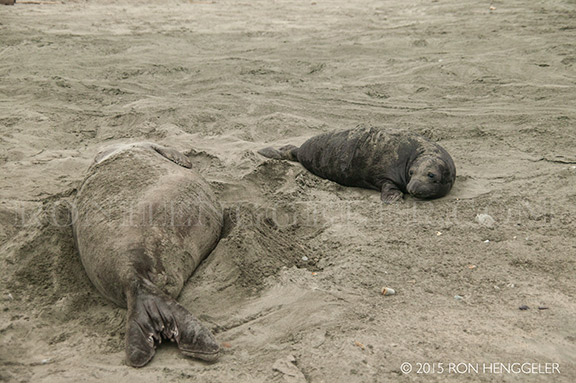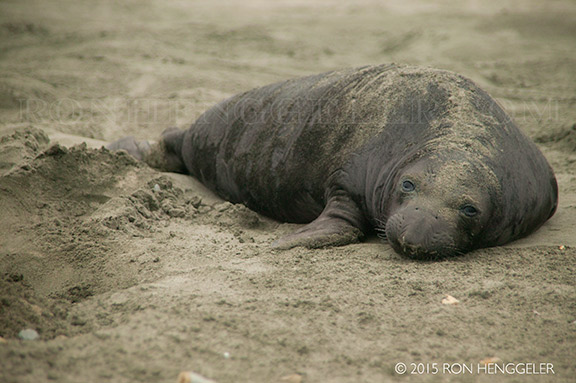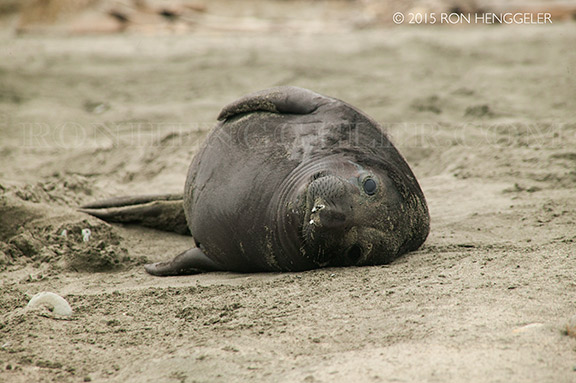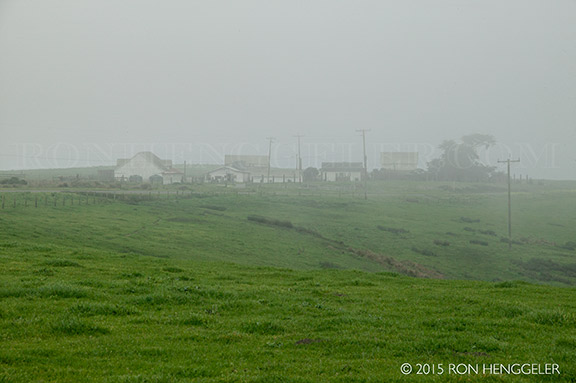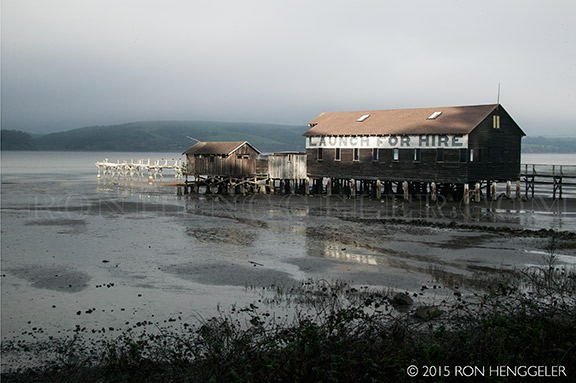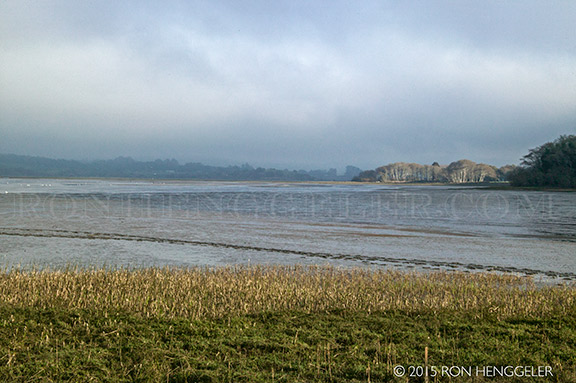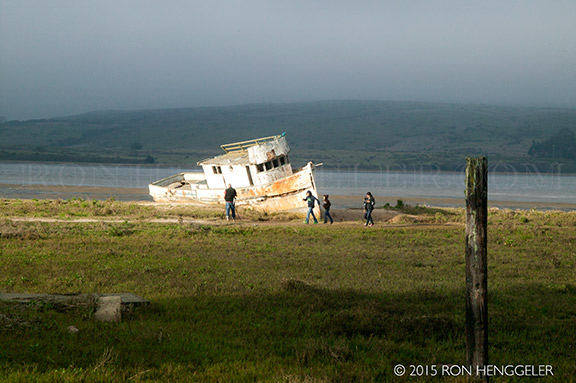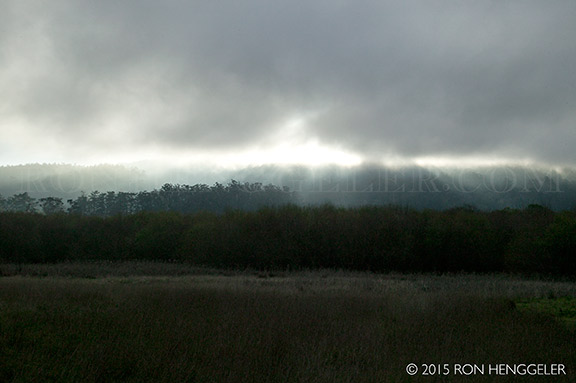RON HENGGELER |
February 18, 2015
Drakes Bay at Point Reyes
Last Monday, Dave and I made a road trip north of San Francisco and visited the Point Reyes National Seashore. Upon arriving in the area, we stopped briefly at the Bear Valley Visitors Center, and later the small town of Point Reyes Station. We spent most of the day walking the beach at Drakes Bay. Elephant Seals had 'hauled out' and were sleeping along the beach of Drakes Bay. Park service attendants were monitoring the seals and the people strolling the beach. All was very peaceful and it was thrilling to be able to be so close to these large wild mammals. Here are photos from the day.
Our first stop on Monday. . .the Bear Valley Visitors Center. The park's primary Visitor Center provides an orientation of the park's roads, trails, and human and natural history. The Bear Valley Visitor Center was designed to blend in with the historically significant ranching culture of this area and is located in the heart of the Olema Valley. |
The interior exhibit space provides a glimpse of the diverse ecosystems and cultural heritage of the park and includes a seismograph, touch table, auditorium, and book sales area. The Bear Valley Visitor Center is located 0.8 kilometer west of Olema, CA along Bear Valley Road. |
From its thunderous ocean breakers crashing against rocky headlands and expansive sand beaches to its open grasslands, brushy hillsides, and forested ridges, Point Reyes offers visitors over 1500 species of plants and animals to discover. Home to several cultures over thousands of years, the Seashore preserves a tapestry of stories and interactions of people. |
The bobcat (Lynx rufus) is the most common wildcat in North America and one of two cats found within the Point Reyes National Seashore. It is much smaller than the mountain lion; however, it is not as wary of humans and is often encountered during daylight. |
Nova Albion, Francis Drake's 1579 campsite; Sebastião Rodrigues Soromenho's 1595 wreck; and fifteen associated Native American sites are included in the Drakes Bay Historic and Archaeological District National Historic Landmark. This encompasses 5,965 acres along the coast of Drakes Bay. |
Kule Loklo, a recreated Coast Miwok village, is a short walk from the Bear Valley Visitor Center. |
Five million year old whale fossil remains found in the cliffs along Drakes Bay at Point Reyes |
Drakes Bay is a small bay in the Point Reyes National Seashore on the coast of northern California in the United States, approximately 30 miles northwest of San Francisco. The bay is approximately 8 miles wide. It is formed on the lee side of the coastal current by Point Reyes. The portions of the bay related to Francis Drake's 1579 visit, Sebastião Rodrigues Soromenho's 1595 visit and their interactions with the Coast Miwok were designated as the Drakes Bay Historic and Archaeological District, a National Historic Landmark, on October 17, 2012. |
After being absent for more than 150 years, elephant seals returned to the sandy Point Reyes Headlands in the early 1970s. In 1981, the first breeding pair was discovered near Chimney Rock. Since then, researchers have found that the colony is growing at a dramatic annual average rate of 16 percent. Fanning out from their initial secluded spot, the seals have expanded to popular beaches. |
From December through March a breeding colony of elephant seals can be observed from Elephant Seal Overlook near Chimney Rock, above beautiful Drakes Bay. The males are the first to arrive here, in December, to stake out a claim on the beach. Then pregnant females begin to arrive and soon give birth to a single pup. Subadult and juvenile animals arrive and the colony can number close to one hundred animals. |
The bay is named after Sir Francis Drake and has long been considered Drake's most likely landing spot on the west coast of North America during his circumnavigation of the world by sea in 1579. An alternative name for this bay is Puerto De Los Reyes. |
A wide stretch of beach backed by dramatic white sandstone cliffs makes Drakes Beach a very popular place. Drive-up access, a small café and a visitor center add to its appeal. The sands of the Drakes Bay cliffs were deposited in a shallow sea 10–13 million years ago, compacted, then uplifted. Erosion has revealed the striations of this story in the cliff faces. |
The first weaned pups are now being observed at colonies around the park. These “weaners” were the first pups born this season in December. Pups are weaned when their mother abruptly leaves the beach after a nursing period of about 4 weeks. During this time, the females will not leave the shore and, therefore, do not eat. A mother’s milk is produced using the fat reserves she has built up from eating throughout the year. This super-nutritious milk (up to 60% fat) will not only support her pup’s growth from 70 lbs. at birth to 300 lbs. when it is weaned, but will also sustain the weaner fasting up to 12 weeks on the beach after its mother has left. |
Beachcombers viewing a sub-juvenile elephant seal at Drakes Bay |
Northern elephant seals (Mirounga angustirostris) are one of six pinniped species found in the San Francisco Bay Area. As top ocean predators, and prey for even larger predators like orca whales and great white sharks, they are a key component of the marine ecosystem. |
Elephant seals spend most of their lives in the deep ocean waters of the North Pacific, journeying thousands of miles each year and diving to great depths in search of food. Changes in their populations often reflect changes in marine conditions, so monitoring them gives us important insights into the state of our oceans. Elephant seals can also be readily counted when they come ashore each year to give birth and breed (December-March), and later to molt (April-July). |
The beach at Drakes Bay with Chimney Rock in the distance |
|
Despite universal agreement among historians that Drake landed on the west coast of North America, the exact location of his landing, and thus of the region he called New Albion, has been the subject of several theories. The only confirmed sixteenth-century archaeological evidence consists of pieces of porcelain found at Drakes Bay, north of San Francisco. |
|
The site of Drake's landing officially recognized by the U.S. Department of the Interior and other bodies is Drake's Cove, in Drakes Bay. The bay is in Marin County, California, near Point Reyes, just north of the Golden Gate. |
|
Starting in the seventeenth century, maps identify Drakes Bay as Drake’s landing site. George Vancouver studied Drake’s landing site and concluded it was in Drakes Bay. |
|
|
|
|
|
|
|
Point Reyes National Seashore is one of only about a dozen sites where northern elephant seals breed worldwide. |
Visitors to Drakes Bay at Point Reyes viewing and photographing the Elephant Seals. The annual winter arrival of the massive pinnipeds always draws a crowd to Point Reyes National Seashore. The seals, after traveling thousands of miles, haul themselves out at Drakes Bay to give birth and to mate, or to simply take a well-deserved nap. |
Biologists who monitor the seal population recently spotted the first pup of the season born on the beach of drakes Bay at Point Reyes. Most pups are born in January, and initially are about 3 to 4 feet long and weigh about 60 pounds. Fully grown, a male elephant seal can reach 18 feet in length and top the scale at 6,000 pounds. Pups born at the seashore have been tracked as far away as Canada, Alaska and Russia. |
Beachcombers at Drakes Bay with Chimney Rock in the distance |
While nursing females do not usually move from the harem, they can be washed down the shore with their pup from strong swells or storm surge, as was seen at the end of January. This can happen to young or less dominant mothers who could not secure optimal locations. A behavioral adaptation that has been observed in young mothers is early arrival resulting in increased reproductive success. Although, experience is still a greater factor leading to a successfully weaned pup. It is not uncommon to find weaners spreading to less popular sites as well. After pups are kicked out of the harem, visitors may see these balls of blubber bobbing through the water or occupying beaches away from the mating season chaos. Above: Pup with mother resting at the Drakes Beach Visitor Center. |
The pup at the Visitor Center was not born there, but was about 2 - 3 weeks old when it showed up last week. |
It is not uncommon to find weaners spreading to less popular sites as well. After pups are kicked out of the harem, visitors may see these balls of blubber bobbing through the water or occupying beaches away from the mating season chaos. Above: A pup (burping and farting) and resting at the Drakes Beach Visitor Center. |
An old historic ranch near Drakes Bay |
Tomales Bay |
Tomales Bay |
An old beached fishing boat, the 'Point Reyes', at Inverness alongside Tomales Bay |
Sunset behind the marine layer coming into the Olema Valley on the way home from Point Reyes.
For more photos of the Point Reyes National Seashore including the mysterious 820 ft. long line of granite stones along the Tomales Head Trail in the Tule Elk Reserve at Point Reyes, visit: http://www.ronhenggeler.com/Pt_Reyes2/PtReyesMasterIndex.html |
Newsletters Index: 2015, 2014, 2013, 2012, 2011, 2010, 2009, 2008, 2007, 2006
Photography Index | Graphics Index | History Index
Home | Gallery | About Me | Links | Contact
© 2015 All rights reserved
The images are not in the public domain. They are the sole property of the
artist and may not be reproduced on the Internet, sold, altered, enhanced,
modified by artificial, digital or computer imaging or in any other form
without the express written permission of the artist. Non-watermarked copies of photographs on this site can be purchased by contacting Ron.
